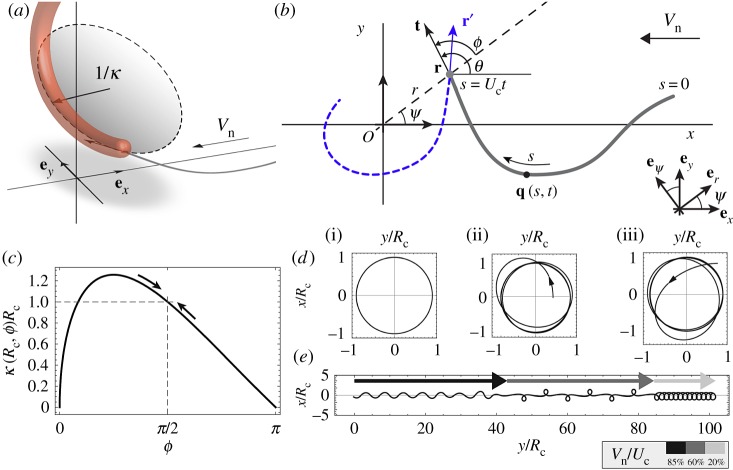Figure 3.
(a) Sketch of the heel-like structure of the thread in the vicinity of the printing plate. Its shape is approximated by a fraction of a circle with radius 1/κ. (b) Kinematics of the problem describing the position of the contact point, r, and pattern, q, forming at speed Uc while being advected at speed Vn. t and r′, respectively, denote the tangent to the pattern in the laboratory frame and the tangent to the fictitious trajectory of the contact point in the frame of the nozzle. (c) The thread’s curvature κ is assumed to be a function of r and ϕ. Shown here is dependence in ϕ for r=Rc. (d) Integration of the reduced model (3.5) with Vn=0 for (i) r(0)=1,ϕ(0)=π/2, (ii) r(0)=0.5,ϕ(0)=π/2 and (iii) r(0)=1.2,ϕ(0)=3π/4 displaying the stability of the base solution (i). (e) Result of the integration of equation (3.5), where Vn is a piecewise function of time as indicated in the legend. Coils, alternated loops and meanders are recovered. (Online version in colour.)

